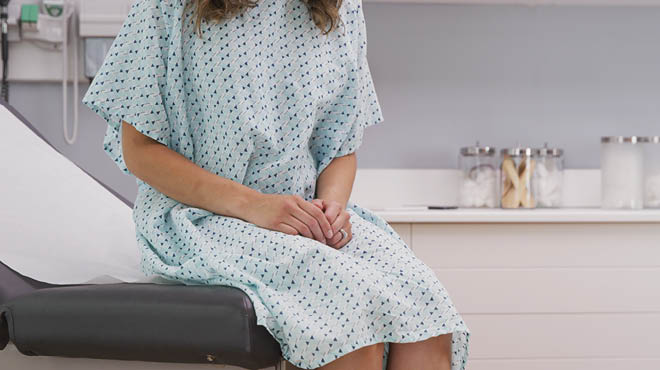Uterovaginal prolapse: What's that?

Women can share so much helpful information about how the body changes over time. While there are many health issues that women may feel comfortable discussing with their friends and family, many of the details of the aging process go undiscussed, often because of embarrassment.
Check your knowledge about a common issue for women: pelvic organ prolapse.
True or False: Female organs can shift out of place.
True. Women's pelvic organs can shift and slip out of place, particularly as they age. Because of this, women may experience issues, such as pelvic or vaginal pressure, and may notice a sensation of a bulge near or through the vaginal opening. These are common symptoms of a condition called uterovaginal prolapse.
True or False: Prolapse issues happen suddenly.
False. Although some women may feel that they suddenly notice the prolapse, it typically develops slowly. However, the prolapse may only be obvious once it can be seen or felt. This can be distressing and cause women to see their healthcare team urgently out of fear of a serious health condition like cancer. Others may notice the change and are too embarrassed to see their healthcare team or feel it's part of the aging process.
Women can have one or a combination of symptoms related to a prolapse, including:
- Inability to empty the bowels or bladder fully or easily
- Difficulty holding urine or stool, and noticing leakage from the bladder or bowels
- Needing to physically push the vaginal bulge in when they urinate or have a bowel movement
- Seeing tissue that protrudes through the vagina opening
True or False: Prolapse is a common issue.
True. Roughly half of women have some degree of prolapse, and it can affect women of various ages. Prolapse can be associated with naturally occurring changes in women's bodies, such as childbirth and menopause. However, it's most commonly diagnosed after menopause when the body's estrogen levels fall, ligaments and muscles weaken or stretch, and pelvic organs shift. While it may be common, prolapse isn't something women need to simply put up with.
True or False: Prolapse can be prevented.
True and false. Some of the factors that cause prolapse can be modified through lifestyle changes. While women can't change their genetics or age, they can work to avoid actions that cause recurring straining. Pelvic support structures also can weaken during pregnancy and vaginal delivery. Strengthening and restoring support to the pelvic floor with exercises, like Kegel exercises, can improve prolapse symptoms.
True or False: There is no cure for prolapse.
True and false. While there is no way to cure prolapse, there are ways to treat it and improve symptoms. Gynecologists, urologists and physical therapists work to help resolve these issues.
Care teams review treatment options to allow women to make the decision that best fits their needs. Options include:
- Choosing to do nothing to treat the prolapse, but prevent from worsening by avoiding activities that can cause strain, such as heavy lifting and constipation.
- Seeing a physical therapist to improve the strength and coordination of pelvic muscles and nerves to alleviate symptoms.
- Using a device called a pessary, which is a silicone device inserted into the vagina to help support pelvic organs. If fitted and inserted correctly, most women report not noticing the pessary when it's in place. A healthcare professional can remove, clean and replace the pessary every few months, or you can do it more frequently at home.
- Having surgery to repair the prolapse or urinary leakage.
True or False: Treatment can provide relief.
True. There is hope for women who experience prolapse.
Here are just a few of the improvements that patients report:
- Relief from the feeling of pressure in the vagina.
- The ability to empty the bladder and bowels normally.
- Reduction or elimination of leakage from the bladder or bowels.
- Less frequent visits to the bathroom.
- Increased comfort during sexual intercourse.
- No longer having tissue or organs fall toward or through the vaginal opening.
If you're experiencing prolapse symptoms or leakage from your bladder or bowels, see your healthcare team to determine what treatment is right for you.
Mary Alvarado, M.D., is an OB-GYN in La Crosse, Wisconsin.



